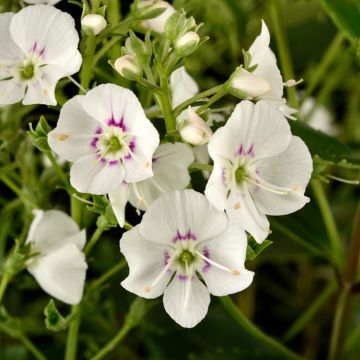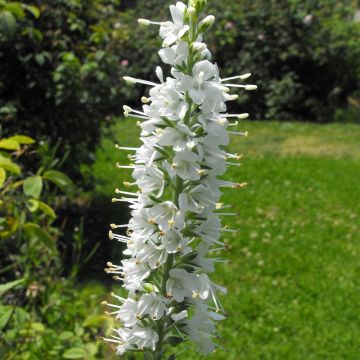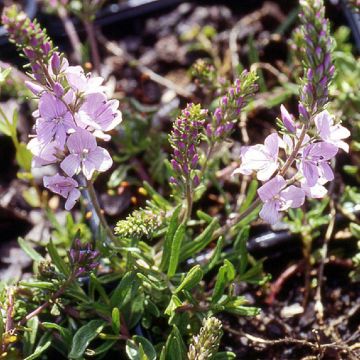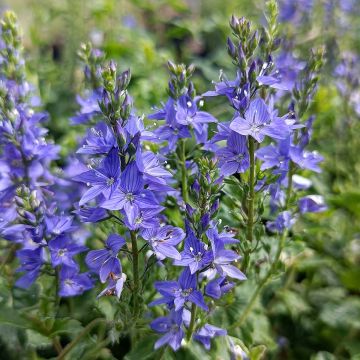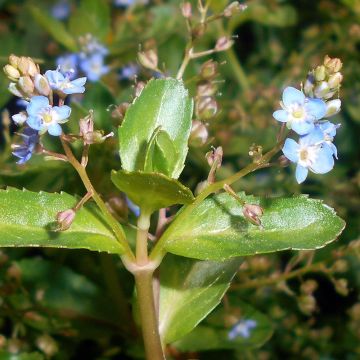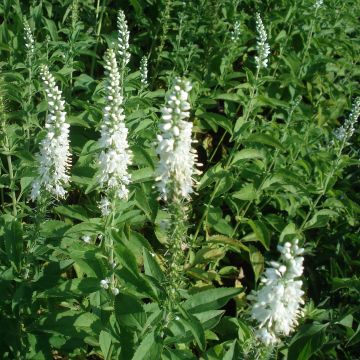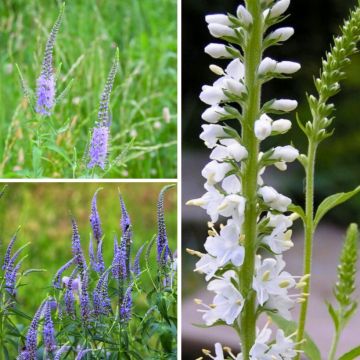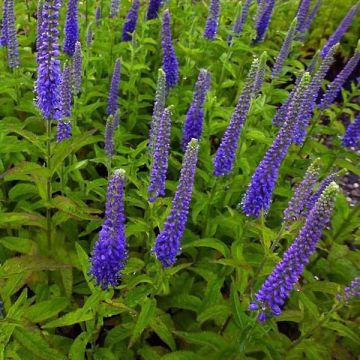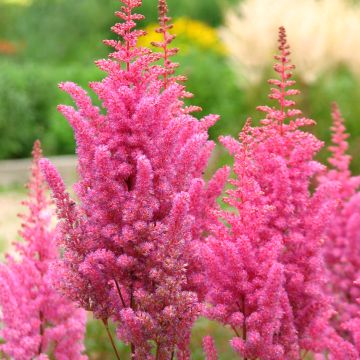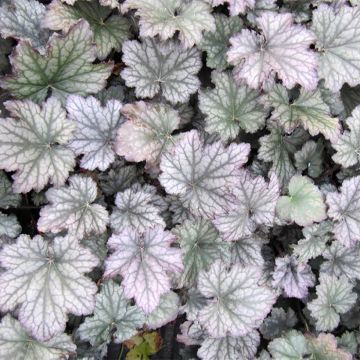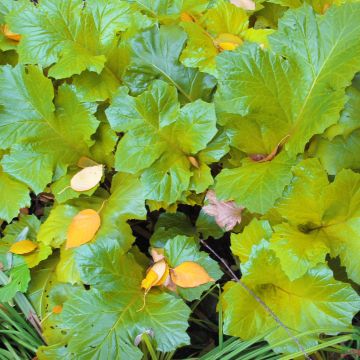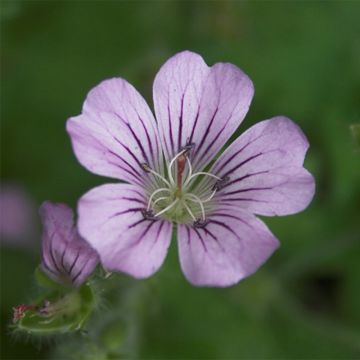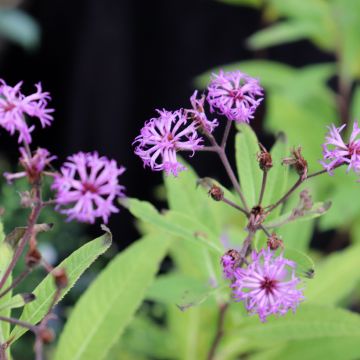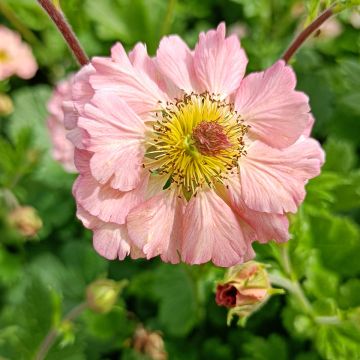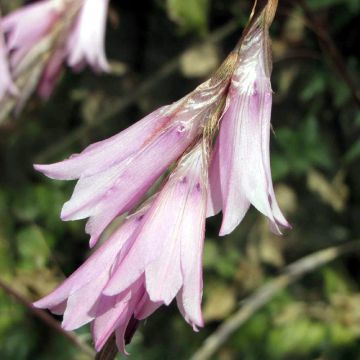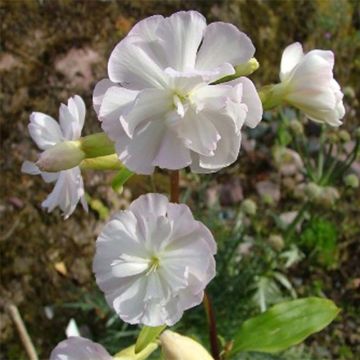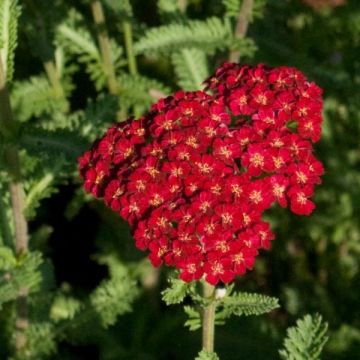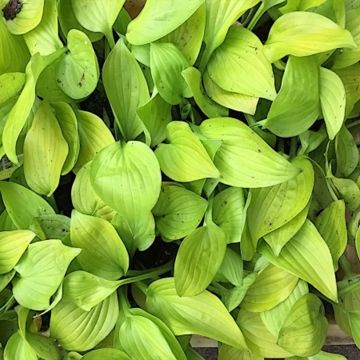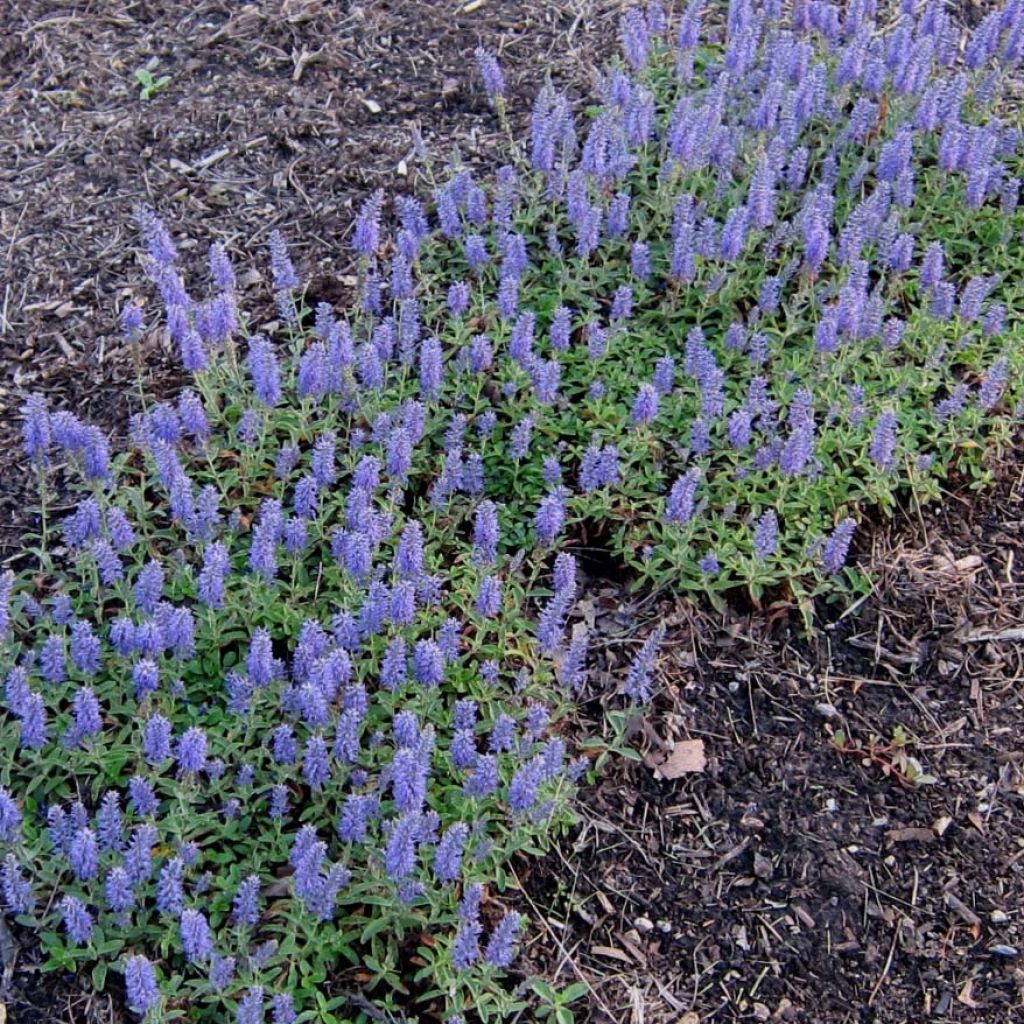

Veronica spicata Nana Blue
Veronica spicata Nana Blue
Veronica spicata Nana Blue
Spiked Speedwell
A few weeks ago, I received a bucket of Veronica spicata nana blue. The plant is beautiful and I can't wait to see the flowers.
Christiane , 13/05/2021
This item cannot be shipped to the selected country
Delivery charge from €5.90
More information
Schedule delivery date,
and select date in basket
This plant carries a 12 months recovery warranty
More information
We guarantee the quality of our plants for a full growing cycle, and will replace at our expense any plant that fails to recover under normal climatic and planting conditions.
From €5.90 for pickup delivery and €6.90 for home delivery
Express home delivery from €8.90.
Does this plant fit my garden?
Set up your Plantfit profile →
Description
Veronica spicata 'Nana Blue' is a recent selection of speedwell that stands out for its low growth and beautiful, bright blue-violet flowers. It is a robust and hardy perennial plant that forms a spreading clump and flowers for a long time in summer. The flower spikes are erect and sculptural, covered with small star-shaped, stunning intense lavender-blue flowers. It thrives and spreads in sunny borders, slopes, and rock gardens, in ordinary but well-drained soil.
Veronica spicata, is a perennial plant from the plantain family (Plantaginaceae), formerly classified in the figwort family (Scrophulariaceae). It is mainly found from Europe to Turkey, in central and eastern Asia, where it grows in mountainous areas, up to 2000 metres (6562 feet) above sea level, and occasionally in lowlands. It can be found in meadows, dry grasslands, rocky slopes, and at the edge of forests, mostly on limestone soil. It adapts well to most gardens, as long as the soil is well-drained.
The 'Nana Blue' variety has compact, bushy, and vigorous growth, reaching a height of 15 cm (6in) for the foliage and 30 cm (12in) when in bloom. It spreads to a diameter of 30-40 m (98-131ft) from its powerful semi-woody crown. Its hairy stems branch out in the upper part and bear leaves that can persist during winter. The beautiful dark green leaves are ovate to linear, with a finely toothed edge. From July to August and sometimes until September, floral stems densely covered with tiny star-shaped blue-lilac, nectar-rich flowers are produced, attracting bees. The plant can self-seed in light soil.
Veronica spicata 'Nana Blue' will thrive in any well-drained, even rocky and limestone soil, as long as it stays moist in summer, preferably in full sun. It is particularly suitable for a mountain garden with rocky soil. It will be very useful for underplanting shrub roses or planting in raised beds, on slopes, in rock gardens, or even in flower pots at the base of taller plants. It can be paired with echinaceas, perennial or shrubby salvias. Its relatively flexible blue spikes add height and colour to a low-growing border composed of ground-hugging plants such as aubrietas, wall bellflowers, rock soapwort, or cerastiums. The dwarf spike speedwell can also be used as a solitary plant or in the spaces between paving stones. Its flowers are beautiful in summer bouquets.
Report an error about the product description
Veronica spicata Nana Blue in pictures
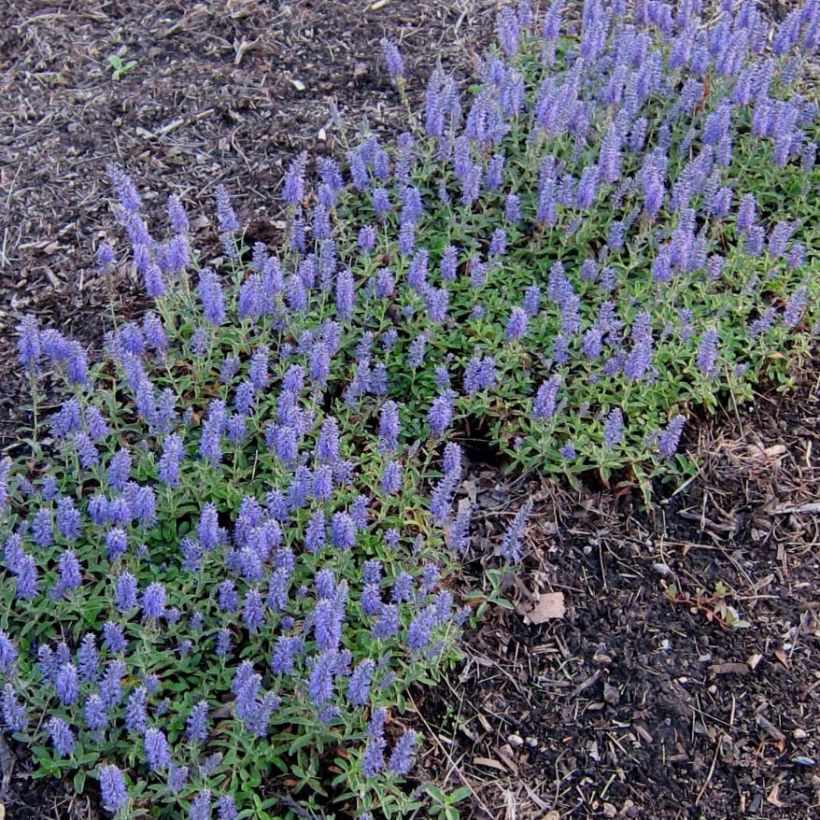

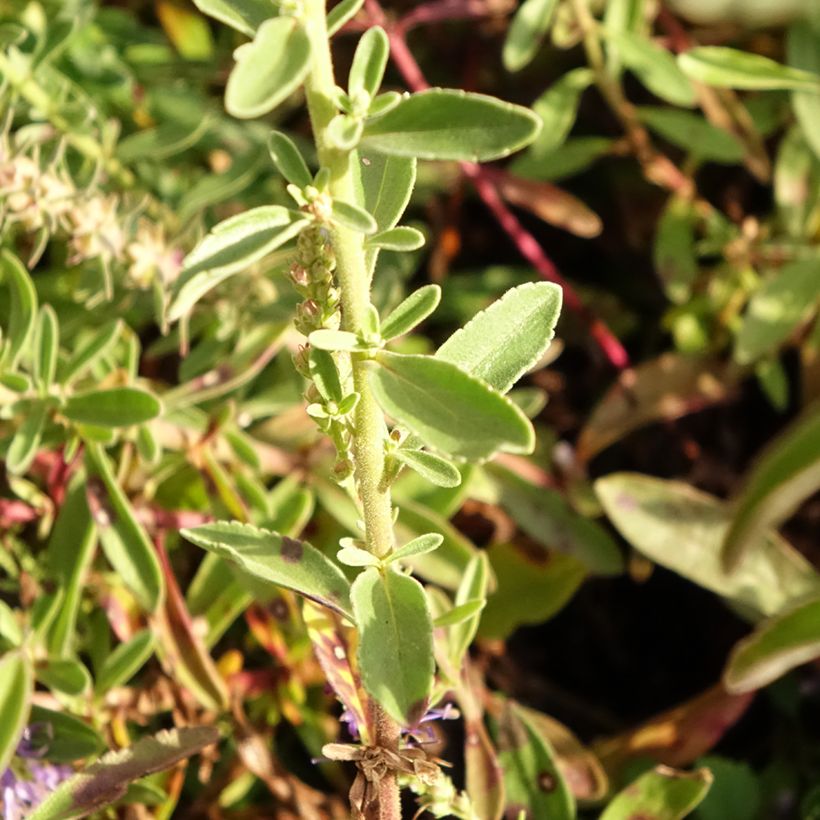

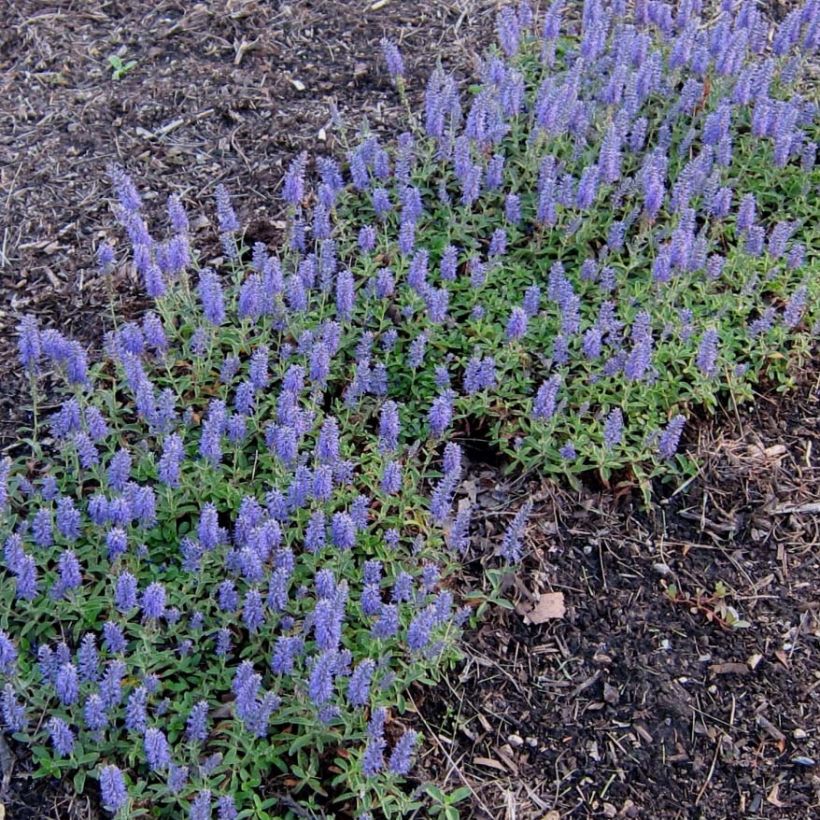

Flowering
Foliage
Plant habit
Botanical data
Veronica
spicata
Nana Blue
Plantaginaceae
Spiked Speedwell
Cultivar or hybrid
Other Veronica - Speedwell
Planting and care
The Nana Blue spike speedwell is a sun-loving plant that will thrive in poor, well-drained soils. Its preferred habitat is limestone, rocky or gravelly soil that remains slightly moist in summer. It is more sensitive to stagnant moisture in winter than to cold temperatures. You can prune the unattractive faded stems to promote new flowers. You can let some plants self-seed, although the resulting plants may not always be the same as the parent. Either way, the clumps should be cut back in spring before the start of new growth.
Planting period
Intended location
Care
-
, onOrder confirmed
Reply from on Promesse de fleurs
Summer flowering perennials
Haven't found what you were looking for?
Hardiness is the lowest winter temperature a plant can endure without suffering serious damage or even dying. However, hardiness is affected by location (a sheltered area, such as a patio), protection (winter cover) and soil type (hardiness is improved by well-drained soil).

Photo Sharing Terms & Conditions
In order to encourage gardeners to interact and share their experiences, Promesse de fleurs offers various media enabling content to be uploaded onto its Site - in particular via the ‘Photo sharing’ module.
The User agrees to refrain from:
- Posting any content that is illegal, prejudicial, insulting, racist, inciteful to hatred, revisionist, contrary to public decency, that infringes on privacy or on the privacy rights of third parties, in particular the publicity rights of persons and goods, intellectual property rights, or the right to privacy.
- Submitting content on behalf of a third party;
- Impersonate the identity of a third party and/or publish any personal information about a third party;
In general, the User undertakes to refrain from any unethical behaviour.
All Content (in particular text, comments, files, images, photos, videos, creative works, etc.), which may be subject to property or intellectual property rights, image or other private rights, shall remain the property of the User, subject to the limited rights granted by the terms of the licence granted by Promesse de fleurs as stated below. Users are at liberty to publish or not to publish such Content on the Site, notably via the ‘Photo Sharing’ facility, and accept that this Content shall be made public and freely accessible, notably on the Internet.
Users further acknowledge, undertake to have ,and guarantee that they hold all necessary rights and permissions to publish such material on the Site, in particular with regard to the legislation in force pertaining to any privacy, property, intellectual property, image, or contractual rights, or rights of any other nature. By publishing such Content on the Site, Users acknowledge accepting full liability as publishers of the Content within the meaning of the law, and grant Promesse de fleurs, free of charge, an inclusive, worldwide licence for the said Content for the entire duration of its publication, including all reproduction, representation, up/downloading, displaying, performing, transmission, and storage rights.
Users also grant permission for their name to be linked to the Content and accept that this link may not always be made available.
By engaging in posting material, Users consent to their Content becoming automatically accessible on the Internet, in particular on other sites and/or blogs and/or web pages of the Promesse de fleurs site, including in particular social pages and the Promesse de fleurs catalogue.
Users may secure the removal of entrusted content free of charge by issuing a simple request via our contact form.
The flowering period indicated on our website applies to countries and regions located in USDA zone 8 (France, the United Kingdom, Ireland, the Netherlands, etc.)
It will vary according to where you live:
- In zones 9 to 10 (Italy, Spain, Greece, etc.), flowering will occur about 2 to 4 weeks earlier.
- In zones 6 to 7 (Germany, Poland, Slovenia, and lower mountainous regions), flowering will be delayed by 2 to 3 weeks.
- In zone 5 (Central Europe, Scandinavia), blooming will be delayed by 3 to 5 weeks.
In temperate climates, pruning of spring-flowering shrubs (forsythia, spireas, etc.) should be done just after flowering.
Pruning of summer-flowering shrubs (Indian Lilac, Perovskia, etc.) can be done in winter or spring.
In cold regions as well as with frost-sensitive plants, avoid pruning too early when severe frosts may still occur.
The planting period indicated on our website applies to countries and regions located in USDA zone 8 (France, United Kingdom, Ireland, Netherlands).
It will vary according to where you live:
- In Mediterranean zones (Marseille, Madrid, Milan, etc.), autumn and winter are the best planting periods.
- In continental zones (Strasbourg, Munich, Vienna, etc.), delay planting by 2 to 3 weeks in spring and bring it forward by 2 to 4 weeks in autumn.
- In mountainous regions (the Alps, Pyrenees, Carpathians, etc.), it is best to plant in late spring (May-June) or late summer (August-September).
The harvesting period indicated on our website applies to countries and regions in USDA zone 8 (France, England, Ireland, the Netherlands).
In colder areas (Scandinavia, Poland, Austria...) fruit and vegetable harvests are likely to be delayed by 3-4 weeks.
In warmer areas (Italy, Spain, Greece, etc.), harvesting will probably take place earlier, depending on weather conditions.
The sowing periods indicated on our website apply to countries and regions within USDA Zone 8 (France, UK, Ireland, Netherlands).
In colder areas (Scandinavia, Poland, Austria...), delay any outdoor sowing by 3-4 weeks, or sow under glass.
In warmer climes (Italy, Spain, Greece, etc.), bring outdoor sowing forward by a few weeks.

































